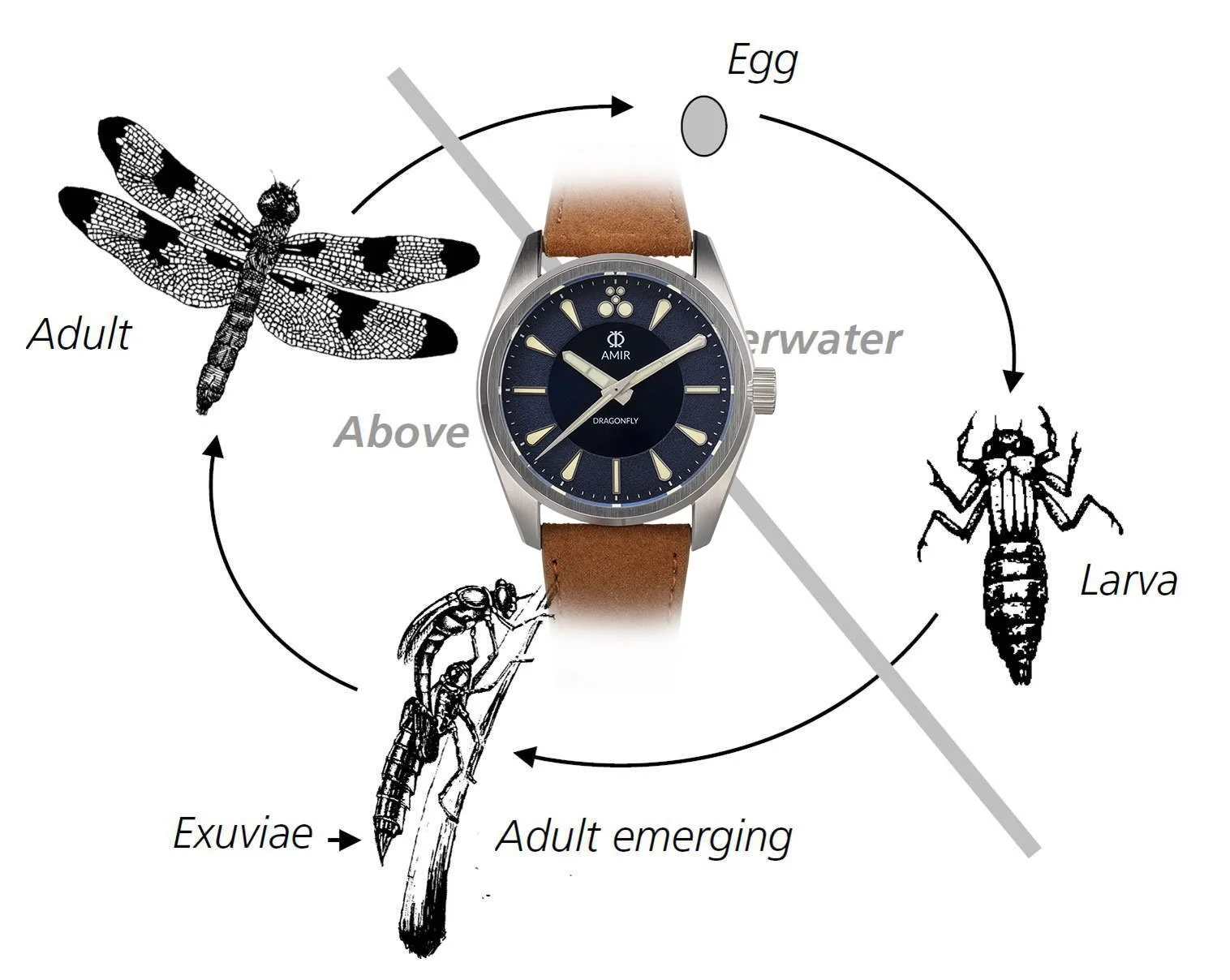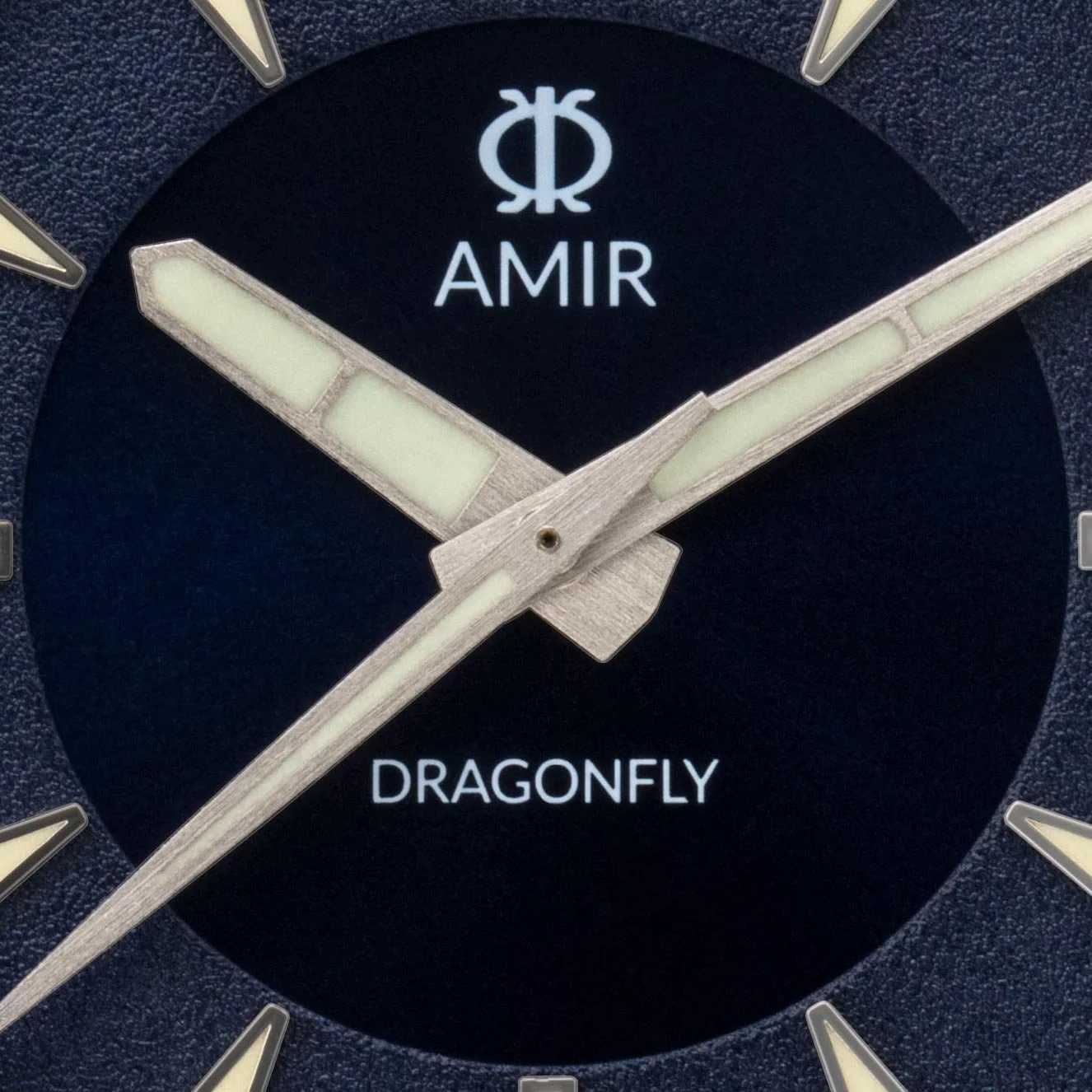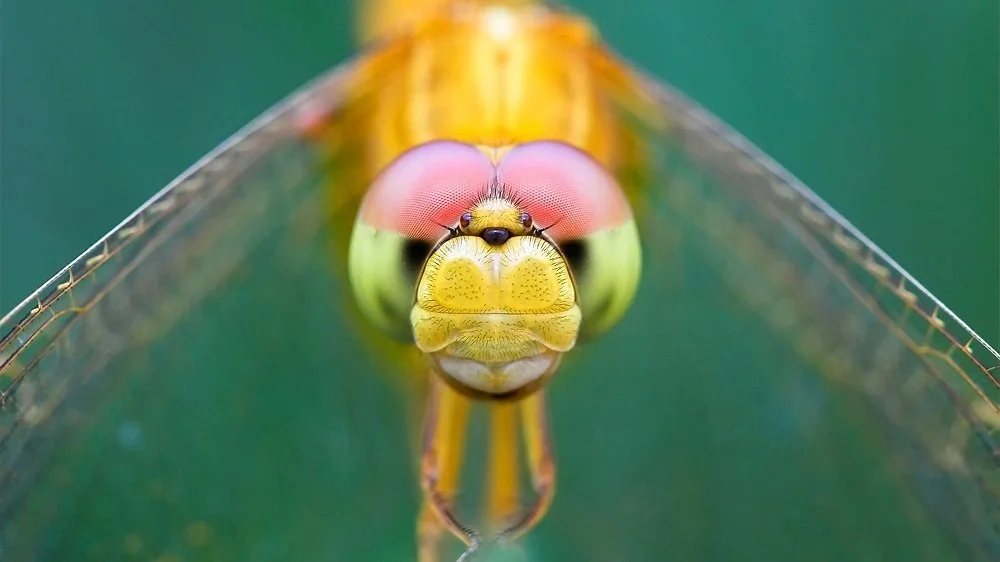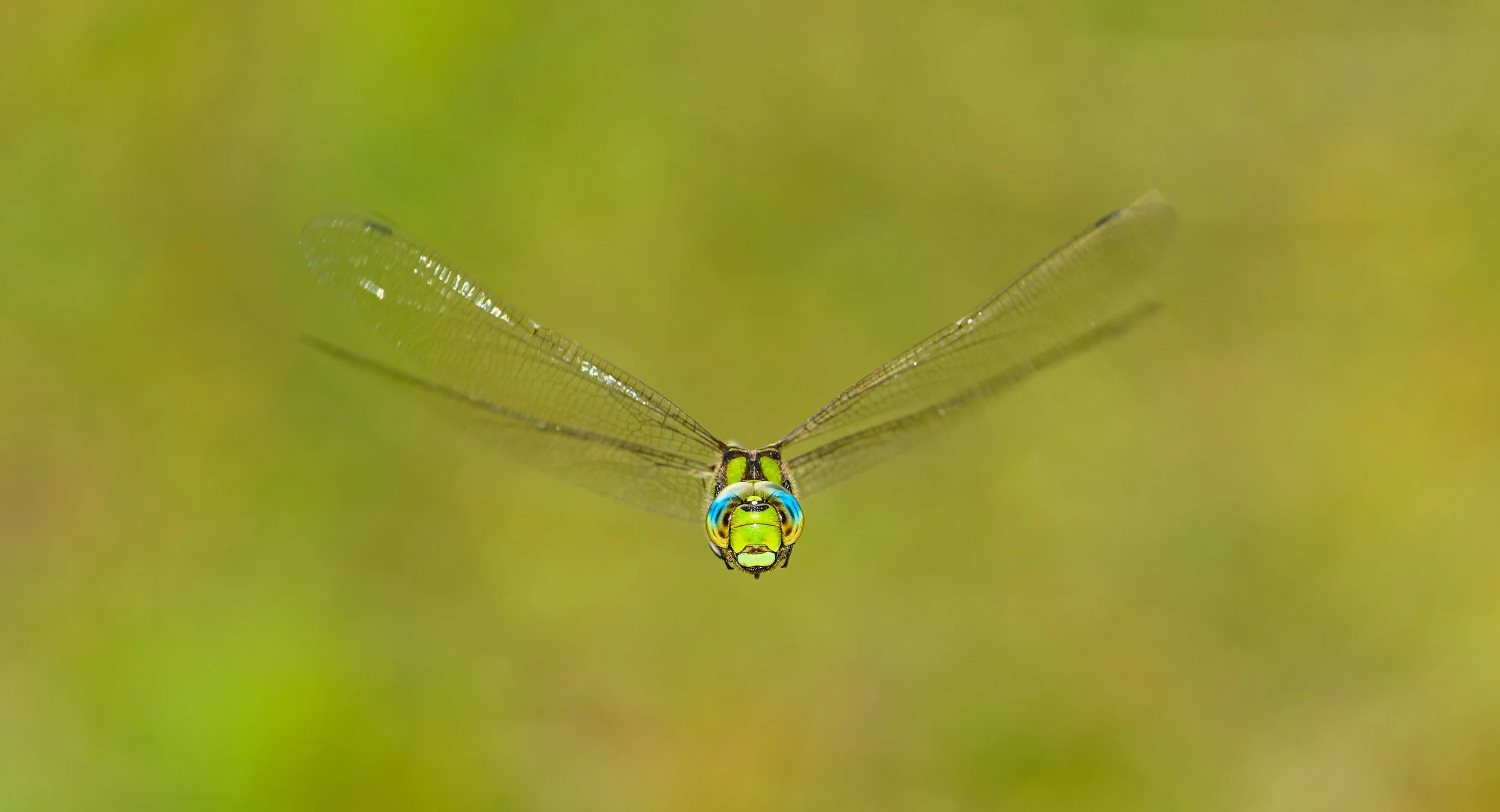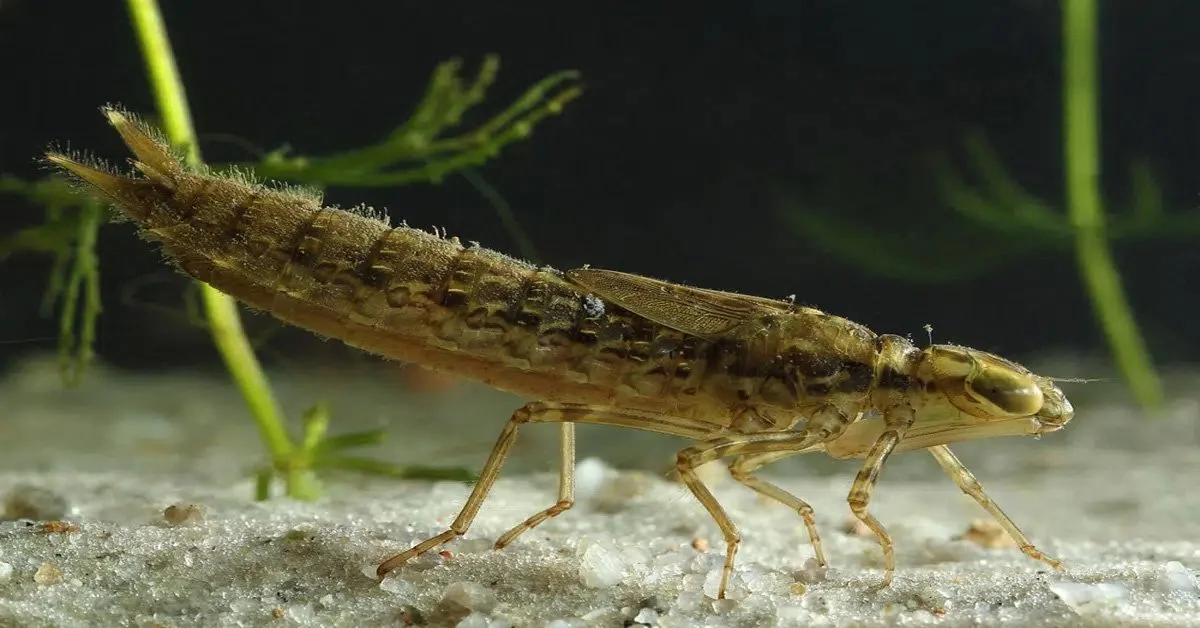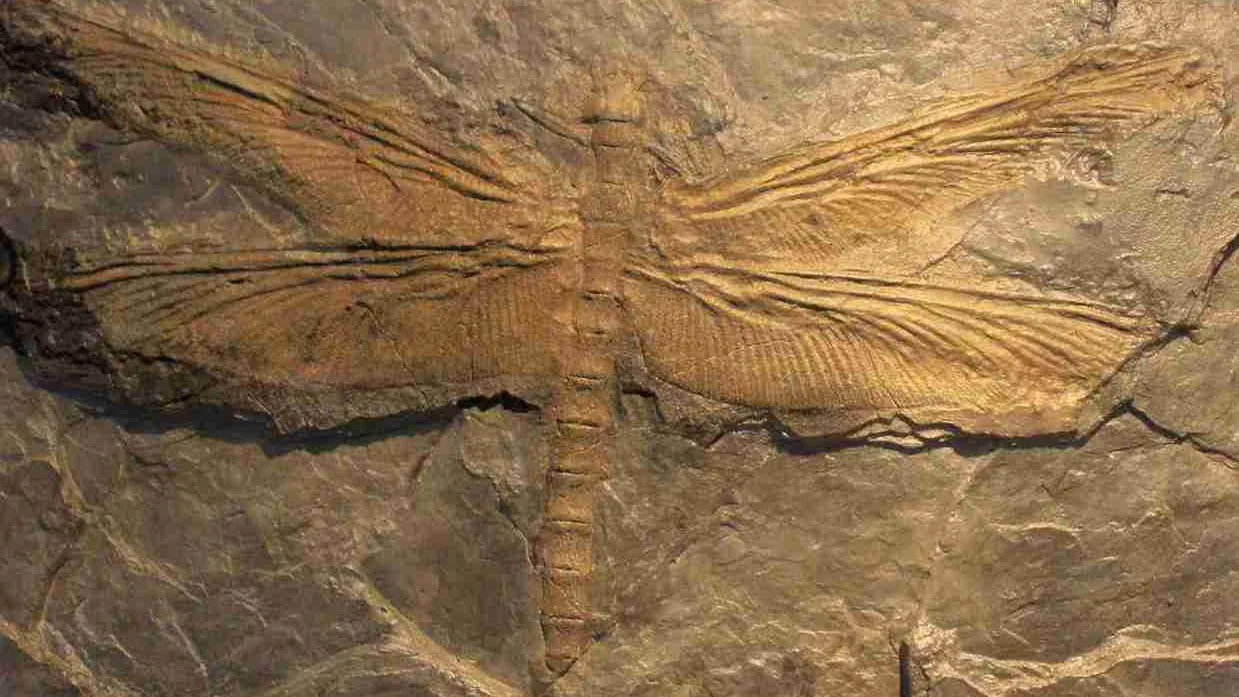Behind The Design
Nature is and will be the direct inspiration behind Amir Watch Company’s current and future watches. The Dragonfly, our first, takes inspiration from its namesake. The design of the watch was chosen to reflect the life cycle and biological features of dragonflies. When thinking of predators, others may come to mind but in terms of efficiency dragonflies are the most effective predators on planet earth. What better place to start then with the best hunter in the world?
The Case
Versatility was a major focus when designing the Dragonfly, and the case is where that begins. A simple tonneau shape with much of the case and bezel being brushed, with polished edges. The industry standard 316 L stainless steel, the combination finishing, and the 41 x 47 x 11.2 case dimensions make for a piece that can go anywhere and do anything.
The case was designed with the mobility of dragonflies in mind, as they are one of the few flying creatures that can move in any direction during flight, as well as glide and hover. This is due to the 4 complex and highly flexible wings that can be moved independently of each other. Agility and maneuverability is a significant piece of what makes dragonflies such effective predators with a success rate of 95%. This superior hunting ability has allowed for thriving populations on every continent except Antarctica. A fact that speaks directly to the versatility of dragonflies.
The Dial
When designing the dial for the Dragonfly the goal was to put the lifecycle on display. The dial has two sections, both a dark blue color; the inner circle which has a sunburst finish, and the outer ring with a rough textured finishing. There are also applied markers of various shapes. All together these elements tell the story of the dragonfly. Their lives of are dependent on water. Not only do they flying around bodies of water, but they also spend 90% of their lives underwater. The first stage of the dragonfly life cycle is as an egg and once hatched the larval stage begins. In this stage the larva will catch and eat anything it can for up to five years until its ready for the final molting. This underwater phase of the cycle is reflected in the inner circle of the dial, with the brushed surface representing the surface of the water.
When preparing for the final molting a dragonfly larva will move to the waters edge and begin to breath air. When the days are the right length, and the temperature is just right the larva will leave the water and climb emergent vegetation to find a sturdy support. Dragonflies undergo an incomplete metamorphosis, which means that they skip the pupal stage and go from larva straight to adult. Once the metamorphosis is complete the dragonfly has now become the winged insect that most people know. Hunting and flying with graceful expertise over the land until finding a mate and laying eggs to restart the cycle. The outer textured ring of the dial represents the transition from water to land for metamorphosis. With the markers embodying the final adult form of the dragonfly.
The Markers
The markers on the Amir Dragonfly are meant to provide legibility as well as tie into the design language of the watch. The applied stainless steel creates a contrast on the dial, making reading the time easy at a glance. Along with being applied, the markers are lumed with x1 grade c3 superluminova, for greater visibility in the dark. The different shapes used were chosen to highlight the distinguishing features of the adult dragonfly.
-At 12 o’clock there is a pair of large circles and three smaller circles in an inverted triangle formation. The larger circles signify the pair of large compound eyes that allow dragonflies to see in 360 degrees and serve as the main tools for vision. Each eye has thousands of lenses that allow for accurately tracking prey and judging distance. The smaller circles represent the ocelli, three simple eyes that serve as light receptors to help stabilize flight, maintain orientation in space, as well as aid in movement detection. Along with these visual capabilities dragonflies also process what they are seeing at 200 images per second, which makes tracking and catching prey a simple task.
-The wing shaped markers can be seen around the dial. These are meant to represent the wings of an adult dragonfly. As their precision in flight is what separates them from other insects. A dragonfly’s wings are extremely flexible due to their complex structure. The veins elaborately weaving throughout the wings allow them to bend and shape for whatever movement or direction change that is needed, while the membranes in between catch the air. The wings’ structure and maneuverability allow dragonflies to make sharp direction changes. This gives them a huge advantage in the air, being able to follow their prey no matter what move they make.
Features & specs
When designing the Amir Dragonfly, the goal was to highlight the animal that inspired its creation. But beyond the visual design choices, functionality and versatility is the goal. This is shown through the additional features of this watch.
-The flat sapphire crystal for greater visibility and legibility
-A screw-down crown to up the durability
-200 Meters of water resistance
-2 strap options (genuine leather suede and perlon passthrough)
These features work in tandem with the other design aspects of the watch to create a piece you can wear comfortably in any situation. The 200 m water resistance which allows for diving is an especially significant feature as it not only adds to the versatility but also completes the story as dragonflies spend the majority of their lives in water.
History
The earliest ancestors of today’s dragonflies lived 300 million years ago. This was the beginning of the Permian period, a time of growth and change for the earth. The climate began to warm, creating an oxygen rich environment leading to the expansion and evolution of life. Insects, plants, early amphibians, reptiles and aquatic animals were all a part of this. Insects thrived in this warmer environment and followed as the plant life spread. Prehistoric dragonflies didn’t differ much from the dragonflies of today biologically. The one major difference is in their size, the largest dragonflies during the Permian period had a wingspan of up to 2ft. This was due to the high levels of oxygen in the air at 35% compared to today at 21%. From the Permian period on dragonflies adapted to the changing environments around them to become a vital component of ecosystems around the world. Considering that they predate the dinosaurs it would only make sense that dragonflies are present in stories, spirituality, and superstitions throughout human history. Depicted in paintings of early humans around the world they were seen as powerful creatures to be respected and emulated.
